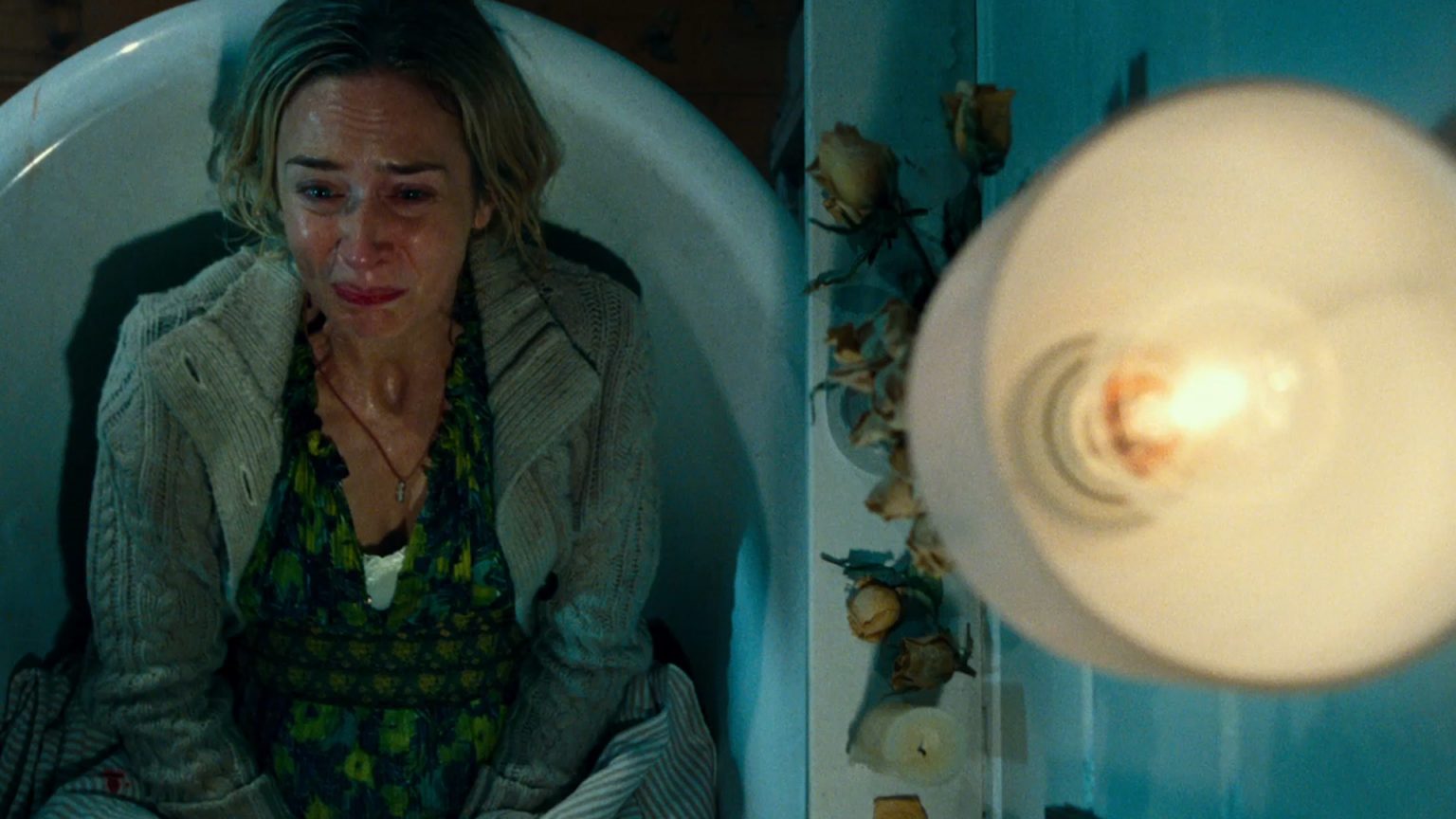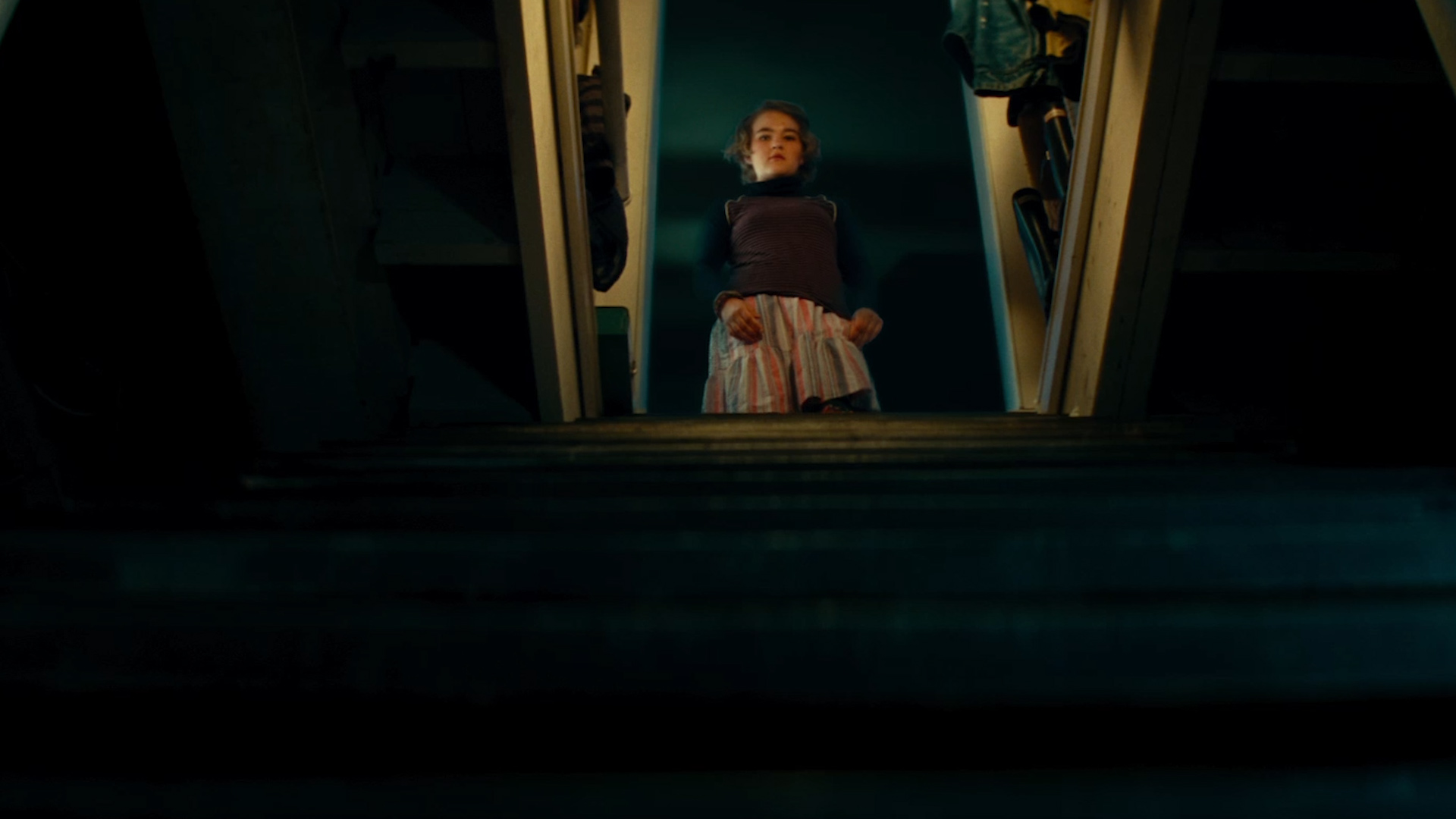In 1961, CBS aired “The Invaders,” the story of a farmhouse besieged by extraterrestrials and one of several Twilight Zone episodes written by Richard Matheson. The only spoken language comes in the episode’s conclusion and Rod Serling’s customary monologues. Agnes Moorehead’s character, the house’s sole resident, spends much of the episode padding about shadowy rooms. The eeriness is amplified by a great ending.
A Quiet Place, the new horror film directed and co-written by John Krasinski, offers something of a variation on this premise. Its story also involves aliens attacking the residents of a farmhouse. Moreover, both “The Invaders” and Krasinski’s film are part of a broad constellation of projects in which spoken dialogue is either absent or conspicuously infrequent. Krasinski deserves credit for strenuously committing to his film’s near-silence. And while this conceit is prefigured by many other comparable (and better) examples, A Quiet Place still conveys a strong sense of novelty.
Television, Krasinski’s old stomping ground, has accommodated many of these comparable examples. Even before The Twilight Zone, there was Ernie Kovacs’ 1956 comedy special, Silent Show. “The Silent Caper,” a dialogue-free episode of 77 Sunset Strip, aired in 1960. And recent examples include Black Mirror’s “Metalhead” and Inside No. 9’s comedic tale of home invasion, “A Quiet Night In.” The X-Files, naturally, has also thrown its hat into the ring through one of its best episodes, “Rm9sbG93ZXJz.”
And examples of movies that use this silent conceit are not as infrequent as one might think. Popular examples include the quieter sections of Dunkirk (2017) and WALL-E (2008). A Quiet Place also joins a smaller subset of movies in which horror and minimal dialogue intersect, sometimes condescendingly or crassly, with a narrative emphasis on visual or hearing impairments. Wait Until Dark (1967) anticipates the less dialogue-laden examples of Don’t Breathe (2016) and Hush (2016). These films work best, of course, when the characters demonstrate more than the limits of their disabilities.
Krasinski, and co-writers Scott Beck and Bryan Woods, mostly succeed in this respect by incorporating guilt and frustration into the personality of their film’s deaf character, Regan, played by Millicent Simmonds, a deaf actress. This logical casting choice recalls Myroslav Slaboshpytskyi’s enormously ambitious film, The Tribe (2014), which features a cast of non-professional deaf actors. Slaboshpytskyi uses Ukrainian Sign Language and forgoes spoken dialogue and even subtitles. This choice by the filmmaker highlights the movie’s theme and setting, which is further realized by the long takes and increasingly tragic narrative.
All these examples aside, some of the filmmakers actually noted by Krasinski as inspirations include Alfred Hitchcock and Steven Spielberg. However, Krasinski’s movie lacks Hitchcock’s more compelling combinations of form and character interiority. This high watermark of Hitchcock’s is well illustrated by the boat scene in The Birds (1963), which features one of the great director’s most suspenseful moments of minimal dialogue. The scene follows Melanie (Tippi Hedren) as she attempts to deposit a gift at Mitch’s (Rod Taylor) house without being noticed. Hitchcock observes her journey with a devious level of patience. Krasinski’s film, outside of its opening scenes, rarely exhibits a similarly robust combination of detail and anxiety.
While A Quiet Place reminds one less of Hitchcock than Krasinski might have hoped, it does evoke shades of Steven Spielberg. Its stubborn aliens suggest Spielberg’s exercise in minimal dialogue, Duel (1971), which first established the director’s oft-used trope of the seemingly inexorable pursuer. Duel’s malevolent tractor-trailer not only anticipates the shark in Jaws (1975), but also spiritually reemerges through the dinosaurs of Jurassic Park (1993), the PreCrime officers and spider robots of Minority Report (2002), and the aliens of War of the Worlds (2005).
A Quiet Place references Jurassic Park and echoes War of the Worlds’ basement scenes through its aliens, similarly cluttered mise-en-scène, strong emphasis on parental anxiety, and games of hiding and seek. Krasinski attempts his own Spielbergian remix, but A Quiet Place’s horror too hastily resolves. One confrontation in a flooded room seems to herald an elaborate hide and seek scene that never really arrives. Instead, its tension quickly evaporates into the next truncated thrill. Spielberg often emulates Hitchcock by thoroughly excavating individual spaces and conflicts. Krasinski, meanwhile, darts from one half-measure to another.
A Quiet Place’s first half is more successful. There’s a grace to the way Krasinski’s camera introduces the farmhouse or surveys a landscape dotted with signal fires. Yet even here the emotional scenes seem perfunctory. Jaws says more about guilt and parental responsibility through a father and son’s silent mimicry than anything in A Quiet Place. However, Krasinski engages with those themes much more effectively here than in his previous directorial effort, The Hollars (2016) and A Quiet Place represent a large step forward in the young director’s career, one that echoes Spielberg and Hitchcock, but doesn’t nearly approach them.





